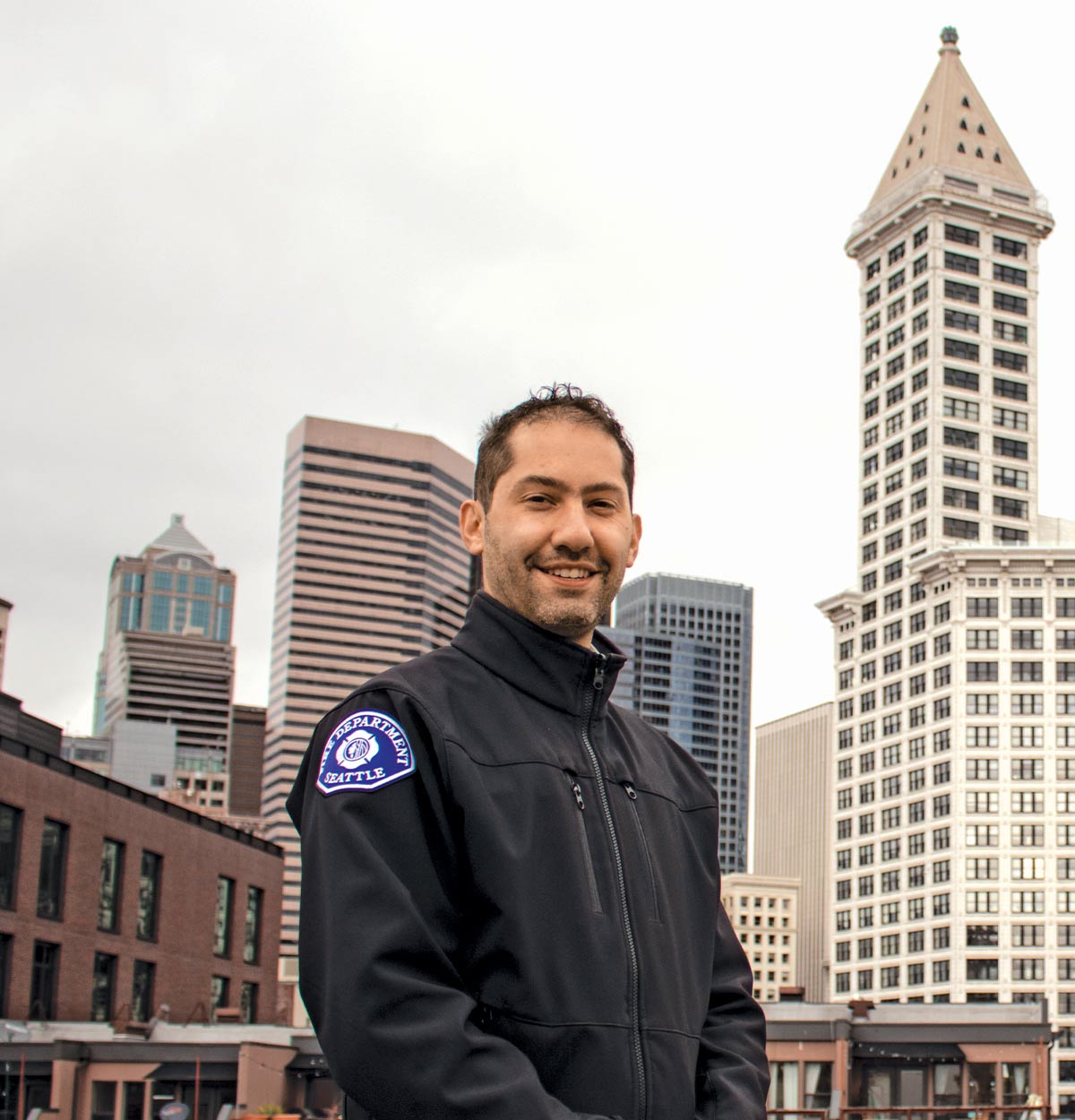
Rescuing 911
Jon Ehrenfeld ’04 is leading a new kind of emergency service team in Seattle. As manager of the Mobile Integrated Health Program at the Seattle Fire Department, he sees his role as an opportunity to help people in crisis.
“911 is a safety net for people who fall through every other gap in our system,” says Ehrenfeld, explaining that about 40% of 911 calls turn out to be “low-acuity,” meaning a lights-and-siren response isn’t necessary.
That’s where the Mobile Integrated Health Program comes in. With an aging population and a huge need for nonemergency medical care and social services among, for example, those with mental health and substance-use disorders, the service can be particularly helpful, Ehrenfeld says.
“Two firefighters and a social worker, with their combined multidisciplinary knowledge and skills, can solve almost any problem and de-escalate any situation,” he says. “This model really works — and it’s replicable.”
Community paramedicine is a new and rapidly evolving field in fire services. “We are a reflection of systemic failure in multiple overlapping systems, but we have an opportunity to be proactive instead of reactive,” Ehrenfeld says. Programs like this save tax dollars, free equipment and personnel for other responses, and alleviate the disproportionate burden placed on the health care system, he says. They also benefit people by providing holistic care that can address the root causes of their distress.
“There’s a direct line from my experience at Swarthmore to what I’m doing now,” Ehrenfeld says. His service at the Swarthmore Fire Department ultimately changed the course of his career — and his life: He and his wife, Emily Ford ’04, met while volunteering at the fire station. In another Swarthmore connection, Paul Atwater ’95, who also volunteered with the Swarthmore Fire Department, is a fire battalion chief in Seattle. Atwater was heavily involved with the launch of the Mobile Integrated Health Program — just three and a half months before COVID-19 hit.
“I apply a lot of the principles I learned at Swarthmore — as I look at issues of socioeconomic disparity and theoretically equitable systems, for example,” Ehrenfeld says. The pandemic has only widened those equity gaps. “We’re connectors,” he adds. “We connect people with the resources, experts, and providers they need. COVID has brought a titanic upswell of need, but so many of the partners we rely on are unavailable now due to COVID.”
The national focus on crisis response has also created a catalyst moment, and many cities have taken quick, bold actions to implement proactive, integrated services. Ehrenfeld’s unit has experienced a steady rise in use and has had such a positive impact that a second unit has now launched.
The Seattle Fire Department recently honored Ehrenfeld as Civilian of the Year. “I feel fortunate to be in this position, and I like going to work.” He smiles. “It’s a privilege to serve.”